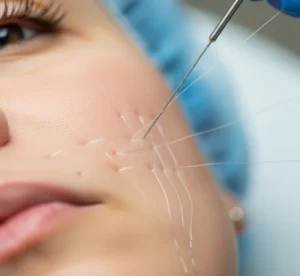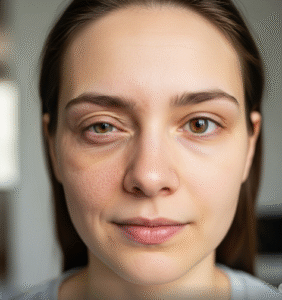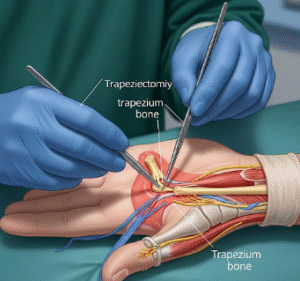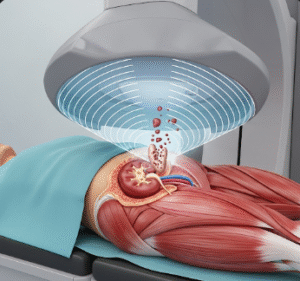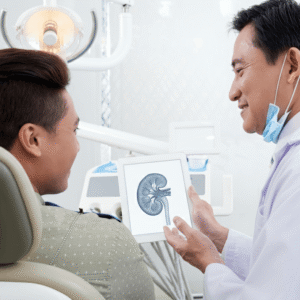➤ Overview
A sore throat refers to pain, scratchiness, or irritation in the throat, which can make swallowing, talking, or breathing uncomfortable. It is one of the most common symptoms of upper respiratory conditions and may be caused by viral infections, bacterial infections, allergies, or environmental factors.
In South Korea, sore throat evaluation is performed by ENT specialists, general physicians, and pediatricians. Diagnostic tests, including throat swabs, blood tests, and imaging if needed, ensure accurate identification of the cause, allowing timely treatment to relieve symptoms and prevent complications such as tonsillitis, pharyngitis, or abscess formation.
➤ Key Facts
→ Sore throat is a symptom, not a disease, often associated with infections of the throat, tonsils, or pharynx.
→ Viral infections, such as the common cold, influenza, or COVID-19, are the most frequent causes.
→ Bacterial infections, particularly streptococcal pharyngitis, require prompt medical attention.
→ Allergies, dry air, smoking, or pollution can contribute to throat irritation.
→ In Korea, rapid strep tests and throat cultures are widely used for diagnosis.
→ Early treatment prevents complications like rheumatic fever or peritonsillar abscess.
→ Symptom relief may include hydration, pain relief, and throat-soothing remedies.
➤ What is Sore Throat?
A sore throat is a manifestation of inflammation or irritation in the pharyngeal tissues:
→ Pain or discomfort – Mild scratchiness to severe throat pain.
→ Swallowing difficulty – Dysphagia may accompany infection or inflammation.
→ Redness or swelling – Often visible on tonsils or throat lining.
→ White patches or exudate – May indicate bacterial infection.
→ Irritation triggers – Viral infections, bacterial infections, allergens, environmental irritants, or gastroesophageal reflux.
→ Duration – Typically 3–7 days for viral causes; longer or worsening symptoms may indicate a bacterial or chronic cause.
➤ What Symptoms are Related to Sore Throat?
Sore throat often occurs with other symptoms depending on the underlying cause:
→ Fever or chills → Common in bacterial or viral infections.
→ Swollen lymph nodes → Neck lymphadenopathy may indicate infection.
→ Cough, runny nose, or congestion → Frequently accompany viral infections.
→ Hoarseness or voice changes → Due to laryngeal involvement.
→ White or yellow patches on tonsils → Suggestive of bacterial infection.
→ Difficulty swallowing → Painful or limited swallowing.
→ Headache or malaise → Often associated with systemic infection.
→ Ear pain → Referred pain from throat inflammation.
➤ What Causes / Possible Causes?
Sore throat can arise from infectious, inflammatory, environmental, or systemic causes:
→ Viral infections – Common cold, influenza, COVID-19, mononucleosis.
→ Bacterial infections – Streptococcal pharyngitis, diphtheria, or peritonsillar abscess.
→ Allergies – Pollen, dust, mold, or pet dander causing throat irritation.
→ Environmental irritants – Smoking, air pollution, dry air, or chemical fumes.
→ Gastroesophageal reflux – Acid reflux irritating the throat lining.
→ Trauma or strain – Excessive shouting, singing, or throat injury.
→ Chronic conditions – Chronic sinusitis, post-nasal drip, or laryngopharyngeal reflux.
→ Immune deficiencies – Weakened immunity increases susceptibility to infections.
➤ When Should I See My Doctor?
Medical evaluation is recommended if sore throat is:
→ Severe or persistent, lasting more than a week without improvement.
→ Associated with high fever, difficulty swallowing, or drooling – May indicate bacterial infection or abscess.
→ White patches or pus on tonsils – Suggestive of streptococcal or bacterial infection.
→ Difficulty breathing – Signs of airway obstruction or severe inflammation.
→ Ear pain or neck swelling – Could indicate complications of infection.
→ Recurrent sore throats – Frequent episodes may indicate chronic or structural issues.
→ In Korea, ENT specialists use throat swabs, rapid antigen tests, and imaging to determine appropriate treatment.
➤ Care and Treatment
Treatment depends on cause and severity:
→ Viral causes – Symptom relief with hydration, rest, throat lozenges, and pain relievers (acetaminophen, NSAIDs).
→ Bacterial causes – Antibiotics prescribed based on culture or rapid strep test results.
→ Supportive care – Warm saltwater gargles, humidifiers, and soothing teas.
→ Avoid irritants – Smoking cessation and reducing exposure to pollutants.
→ Hydration and nutrition – Adequate fluid intake and soft foods for easier swallowing.
→ Hospital care – In severe cases with abscess formation or airway compromise.
→ Follow-up evaluation – Ensures resolution and prevents recurrence.
➤ Treatment Options in Korea
South Korea offers advanced diagnostic and therapeutic care for sore throat:
Diagnosis in Korea
→ Throat swab and rapid antigen test – Identify bacterial infections like strep throat.
→ Blood tests – Detect systemic infection or immune response.
→ Imaging – CT or ultrasound for suspected abscess or complicated cases.
→ ENT examination – Laryngoscopy or pharyngoscopy for direct visualization.
Medical Treatments in Korea
→ Antibiotics – For confirmed bacterial infections.
→ Pain relief and anti-inflammatory medications – Acetaminophen, NSAIDs, or throat sprays.
→ Antiviral therapy – In certain viral infections requiring medical intervention.
→ Supportive remedies – Throat lozenges, humidifiers, and saline gargles.
Advanced Therapies in Korea
→ Drainage of abscesses – For peritonsillar or retropharyngeal abscesses.
→ Surgery – Tonsillectomy for recurrent or chronic tonsillitis.
→ Multidisciplinary care – ENT specialists, infectious disease physicians, and pediatricians for complex cases.
→ Patient education programs – Guidance on hygiene, preventing infection, and lifestyle adjustments.
Rehabilitation & Support in Korea
→ Monitoring for recurrence, complications, or chronic inflammation.
→ Guidance on voice care, hydration, and environmental precautions.
→ Support for patients with allergic or chronic respiratory conditions contributing to sore throat.


